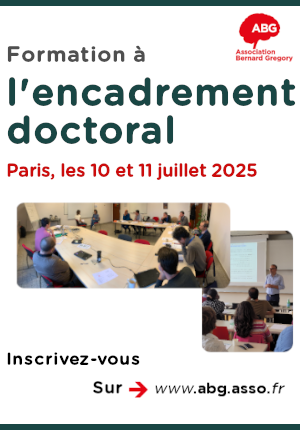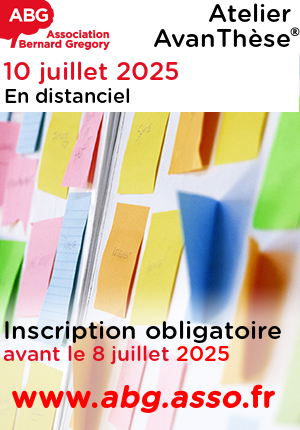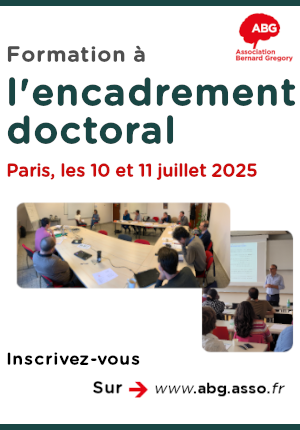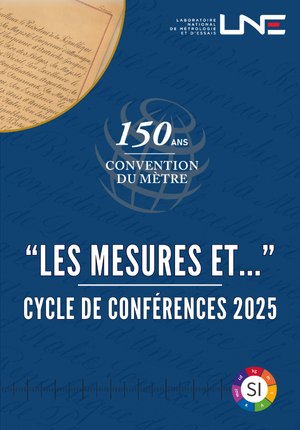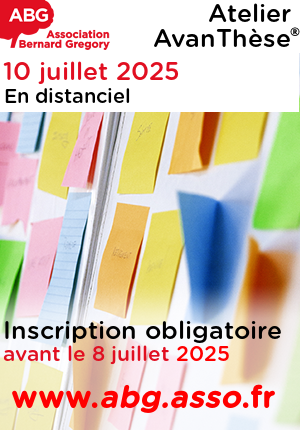Vers le couplage fort entre un spin unique et un résonateur supraconducteur par hyper-focalisation magnétique // Towards strong coupling between a single spin and a superconducting resonator via magnetic mode hyper-focusing
| ABG-132711 | Sujet de Thèse | |
| 28/06/2025 | Financement public/privé |
CEA Paris-Saclay Groupe Quantronique
Saclay
Vers le couplage fort entre un spin unique et un résonateur supraconducteur par hyper-focalisation magnétique // Towards strong coupling between a single spin and a superconducting resonator via magnetic mode hyper-focusing
- Physique
Physique mésoscopique / Physique de l’état condensé, chimie et nanosciences
Description du sujet
La résonance magnétique est un outil non invasif central dans de nombreux domaines, allant de la médecine (IRM) à la chimie analytique,en passant par le calcul quantique, où elle permet de contrôler et de lire des qubits à base de spins. Cette méthode souff re toutefoisd’une faible sensibilité, nécessitant l’observation d’un grand nombre de spins pour extraire un signal détectable. Les progrès récents destechnologies quantiques supraconductrices ont permis de surmonter cette limitation en améliorant la sensibilité de plus de dix ordres degrandeur, notamment grâce à la combinaison de l’eff et Purcell et de nouveaux capteurs : les compteurs de photons micro-ondes.
Ce projet s’inscrit dans cette dynamique en développant une plateforme supraconductrice innovante pour la lecture rapide et effi cace despins électroniques uniques, fondée sur un renforcement du couplage spin-résonateur par hyper-focalisation du champ magnétique.
Grâce à une géométrie originale de type condensateur à plaques parallèles, dotée d’un nanofi l central, le champ magnétique du modemicro-onde peut être concentré dans une région de quelques centaines de nanomètres. Cela permet d’augmenter localementl’interaction entre le champ et les spins électroniques situés juste en dessous. L’objectif central du projet est d’améliorer le facteur dePurcell de deux ordres de grandeur, en le faisant passer de 10¹³ à 10¹5, afi n de réduire drastiquement le temps de détection des spins etpotentiellement d’atteindre un régime de couplage fort au niveau du spin unique.
Le projet ciblera dans un premier temps les ions Er³? implantés dans des cristaux tels que CaWO4, Y2SiO5 ou directement dans lesilicium, dans la perspective d’une intégration future à des architectures de calcul quantique hybride combinant circuitssupraconducteurs et mémoires quantiques à spins. Dans un second temps, la plateforme sera étendue à des systèmes de spinsparamagnétiques réels, tels que des radicaux organiques ou des centres métalliques de protéines, ouvrant ainsi des perspectivesinédites en spectroscopie quantique de composés complexes, bien au-delà des systèmes modèles traditionnellement étudiés.
S’appuyant sur l’expertise du groupe Quantronique du CEA Saclay en circuits supraconducteurs, nanofabrication, cryogénie et détectionde photons micro-ondes uniques, le projet off rira au doctorant une formation complète, à l’interface de la physique expérimentale, desnanosciences et de l’information quantique, au sein d’un environnement de recherche de tout premier plan.
------------------------------------------------------------------------------------------------------------------------------------------------------------------------
------------------------------------------------------------------------------------------------------------------------------------------------------------------------
Magnetic resonance is a non-invasive tool that plays a central role in a wide range of fi elds, from medical imaging (MRI) to analyticalchemistry, and more recently in quantum computing, where it is used to control and read spin-based qubits. However, this techniquesuff ers from low sensitivity, requiring the collective response of a large number of spins to produce a detectable signal. Recent advancesin superconducting quantum technologies have dramatically improved this sensitivity—by more than ten orders of magnitude—bycombining the Purcell eff ect with novel detectors such as microwave photon counters.
This project builds on these breakthroughs by developing an innovative superconducting platform for the fast and effi cient readout of
Mots clés - Keywords
single electron spins, based on enhancing the spin-resonator coupling through magnetic mode hyper-focusing.
Using a specially designed parallel-plate capacitor geometry, featuring a central nanowire, the magnetic fi eld of the microwave mode canbe concentrated within a region of just a few hundred nanometers. This signifi cantly increases the local interaction between the fi eld andthe electron spin located just beneath the nanowire. The central objective of the project is to boost the Purcell factor by two orders ofmagnitude, from 10¹³ to 10¹5, in order to drastically reduce spin detection time and potentially reach the strong coupling regime at thelevel of a single spin.
In a first phase, the project will focus on Er³? ions implanted in crystals such as CaWO4, Y2SiO5, or directly in silicon, with the aim ofintegrating them into hybrid quantum computing architectures combining superconducting circuits and spin-based quantum memories.In a second phase, the platform will be extended to more realistic paramagnetic systems, such as organic radicals or metallic centers inproteins, paving the way for quantum spectroscopy of complex molecular compounds, well beyond the scope of current model systems.
Building on the expertise of the Quantronics group at CEA Saclay in superconducting circuits, nanofabrication, cryogenics, andmicrowave single-photon detection, the project will provide the PhD student with comprehensive training at the intersection ofexperimental physics, nanoscience, and quantum information, within a world-class research environment.
------------------------------------------------------------------------------------------------------------------------------------------------------------------------
------------------------------------------------------------------------------------------------------------------------------------------------------------------------
Pôle fr : Direction de la Recherche Fondamentale
Département : Institut rayonnement et matière de Saclay
Service : Service de Physique de l’Etat Condensé
Laboratoire : Groupe Quantronique
Date de début souhaitée : 01-10-2025
Ecole doctorale : Physique en Île-de-France (EDPIF)
Directeur de thèse : BERTET Patrice
Organisme : CEA
Laboratoire : DRF/IRAMIS/SPEC/GQ
URL : https://iramis.cea.fr/spec/gq/pisp/patrice-bertet/
URL : https://iramis.cea.fr/spec/gq/
Ce projet s’inscrit dans cette dynamique en développant une plateforme supraconductrice innovante pour la lecture rapide et effi cace despins électroniques uniques, fondée sur un renforcement du couplage spin-résonateur par hyper-focalisation du champ magnétique.
Grâce à une géométrie originale de type condensateur à plaques parallèles, dotée d’un nanofi l central, le champ magnétique du modemicro-onde peut être concentré dans une région de quelques centaines de nanomètres. Cela permet d’augmenter localementl’interaction entre le champ et les spins électroniques situés juste en dessous. L’objectif central du projet est d’améliorer le facteur dePurcell de deux ordres de grandeur, en le faisant passer de 10¹³ à 10¹5, afi n de réduire drastiquement le temps de détection des spins etpotentiellement d’atteindre un régime de couplage fort au niveau du spin unique.
Le projet ciblera dans un premier temps les ions Er³? implantés dans des cristaux tels que CaWO4, Y2SiO5 ou directement dans lesilicium, dans la perspective d’une intégration future à des architectures de calcul quantique hybride combinant circuitssupraconducteurs et mémoires quantiques à spins. Dans un second temps, la plateforme sera étendue à des systèmes de spinsparamagnétiques réels, tels que des radicaux organiques ou des centres métalliques de protéines, ouvrant ainsi des perspectivesinédites en spectroscopie quantique de composés complexes, bien au-delà des systèmes modèles traditionnellement étudiés.
S’appuyant sur l’expertise du groupe Quantronique du CEA Saclay en circuits supraconducteurs, nanofabrication, cryogénie et détectionde photons micro-ondes uniques, le projet off rira au doctorant une formation complète, à l’interface de la physique expérimentale, desnanosciences et de l’information quantique, au sein d’un environnement de recherche de tout premier plan.
------------------------------------------------------------------------------------------------------------------------------------------------------------------------
------------------------------------------------------------------------------------------------------------------------------------------------------------------------
Magnetic resonance is a non-invasive tool that plays a central role in a wide range of fi elds, from medical imaging (MRI) to analyticalchemistry, and more recently in quantum computing, where it is used to control and read spin-based qubits. However, this techniquesuff ers from low sensitivity, requiring the collective response of a large number of spins to produce a detectable signal. Recent advancesin superconducting quantum technologies have dramatically improved this sensitivity—by more than ten orders of magnitude—bycombining the Purcell eff ect with novel detectors such as microwave photon counters.
This project builds on these breakthroughs by developing an innovative superconducting platform for the fast and effi cient readout of
Mots clés - Keywords
single electron spins, based on enhancing the spin-resonator coupling through magnetic mode hyper-focusing.
Using a specially designed parallel-plate capacitor geometry, featuring a central nanowire, the magnetic fi eld of the microwave mode canbe concentrated within a region of just a few hundred nanometers. This signifi cantly increases the local interaction between the fi eld andthe electron spin located just beneath the nanowire. The central objective of the project is to boost the Purcell factor by two orders ofmagnitude, from 10¹³ to 10¹5, in order to drastically reduce spin detection time and potentially reach the strong coupling regime at thelevel of a single spin.
In a first phase, the project will focus on Er³? ions implanted in crystals such as CaWO4, Y2SiO5, or directly in silicon, with the aim ofintegrating them into hybrid quantum computing architectures combining superconducting circuits and spin-based quantum memories.In a second phase, the platform will be extended to more realistic paramagnetic systems, such as organic radicals or metallic centers inproteins, paving the way for quantum spectroscopy of complex molecular compounds, well beyond the scope of current model systems.
Building on the expertise of the Quantronics group at CEA Saclay in superconducting circuits, nanofabrication, cryogenics, andmicrowave single-photon detection, the project will provide the PhD student with comprehensive training at the intersection ofexperimental physics, nanoscience, and quantum information, within a world-class research environment.
------------------------------------------------------------------------------------------------------------------------------------------------------------------------
------------------------------------------------------------------------------------------------------------------------------------------------------------------------
Pôle fr : Direction de la Recherche Fondamentale
Département : Institut rayonnement et matière de Saclay
Service : Service de Physique de l’Etat Condensé
Laboratoire : Groupe Quantronique
Date de début souhaitée : 01-10-2025
Ecole doctorale : Physique en Île-de-France (EDPIF)
Directeur de thèse : BERTET Patrice
Organisme : CEA
Laboratoire : DRF/IRAMIS/SPEC/GQ
URL : https://iramis.cea.fr/spec/gq/pisp/patrice-bertet/
URL : https://iramis.cea.fr/spec/gq/
Nature du financement
Financement public/privé
Précisions sur le financement
Présentation établissement et labo d'accueil
CEA Paris-Saclay Groupe Quantronique
Pôle fr : Direction de la Recherche Fondamentale
Département : Institut rayonnement et matière de Saclay
Service : Service de Physique de l’Etat Condensé
Profil du candidat
M2 physique quantique
Postuler
Fermer
Vous avez déjà un compte ?
Nouvel utilisateur ?
Besoin d'informations sur l'ABG ?
Vous souhaitez recevoir nos infolettres ?
Découvrez nos adhérents
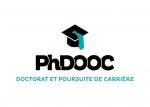 PhDOOC
PhDOOC  Institut Sup'biotech de Paris
Institut Sup'biotech de Paris  Laboratoire National de Métrologie et d'Essais - LNE
Laboratoire National de Métrologie et d'Essais - LNE 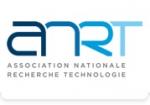 ANRT
ANRT  Nokia Bell Labs France
Nokia Bell Labs France  Ifremer
Ifremer  TotalEnergies
TotalEnergies  MabDesign
MabDesign  SUEZ
SUEZ  CESI
CESI  Généthon
Généthon 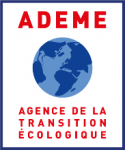 ADEME
ADEME  ONERA - The French Aerospace Lab
ONERA - The French Aerospace Lab  Aérocentre, Pôle d'excellence régional
Aérocentre, Pôle d'excellence régional  ASNR - Autorité de sûreté nucléaire et de radioprotection - Siège
ASNR - Autorité de sûreté nucléaire et de radioprotection - Siège  Tecknowmetrix
Tecknowmetrix  CASDEN
CASDEN  Groupe AFNOR - Association française de normalisation
Groupe AFNOR - Association française de normalisation  MabDesign
MabDesign
-
EmploiRef. 132696Montreal, CanadaMcGill University
Post-doctoral position in medicinal chemistry
Expertises scientifiques :Chimie - Biochimie
Niveau d’expérience :Junior
-
EmploiRef. 132742Genève, Suisse
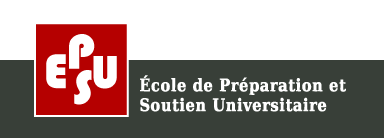 EPSU
EPSUProfesseur de Biologie UP à Genève
Expertises scientifiques :Biologie - Biochimie - Chimie
Niveau d’expérience :Confirmé

